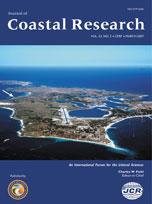Surface sediments from Cadiz and Algeciras Bays (southern Spain) were analysed by a sequential procedure for Cu, Zn, Cd, Pb, Fe, Ni, Cr, and Mn to determine their distribution among four geochemical phases (acid-soluble, reducible, oxidisable, and residual). The total metal content was also determined. The results showed that large amounts of metal accumulate in the interior of Cadiz Bay, whereas in Algeciras Bay, the highest levels of metal are found near the city of Algeciras and an area of major industrial activity. A comparison of metal levels with the sediment quality guidelines suggested by Long et al. (1995) showed areas in both bays in which pollution is sufficient to have noxious effects on marine organisms. Chemical partitioning of the metals revealed that Zn and Pb present the highest percentages in the reducible fraction and that Ni, Cr, and Cd are highest in the residual and reducible fractions. Cu shows the greatest proportion in the oxidisable fraction and Mn in the acid-soluble fraction. Fe is found mainly in the residual fraction, probably because it is an element basically of natural origin.
How to translate text using browser tools
1 March 2007
Potential Mobility of Metals in Polluted Coastal Sediments in Two Bays of Southern Spain
José Morillo,
José Usero,
Ignacio Gracia
ACCESS THE FULL ARTICLE

Journal of Coastal Research
Vol. 2007 • No. 232
March 2007
Vol. 2007 • No. 232
March 2007
Algeciras Bay
Cadiz Bay
Chemical partitioning
principal component analysis
sequential extraction




